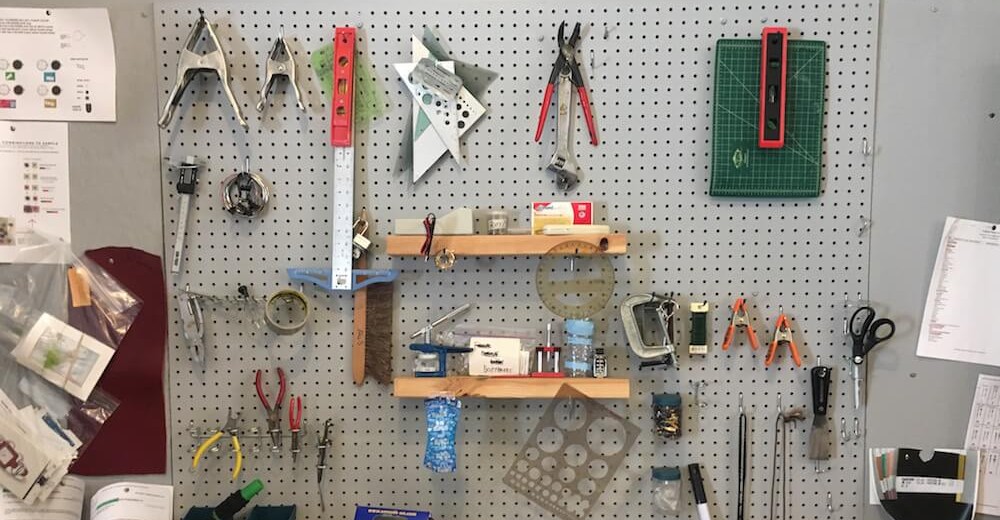Maybe you’ve seen someone around Philly wearing a cool wooden or granite watch. Chances are it was made by Analog Watch Company. When I first met founder Lorenzo Buffa he was working as a barista and perfecting a Kickstarter campaign based on his art school design project. He made $73,000. Now he has a storefront in South Philly, his watches are sold in museums around the world, and he’s been on TV and stuff. You should listen to his advice for artists—and buy one of his watches.
—Christopher Munden, curator
 In 2013 I turned my art school thesis project into a start up brand called Analog Watch Co. Bridging the gap between creative and strategic has taken some time, but ultimately proved to be a crucial element in achieving success.
In 2013 I turned my art school thesis project into a start up brand called Analog Watch Co. Bridging the gap between creative and strategic has taken some time, but ultimately proved to be a crucial element in achieving success.
While the business side isn’t as interesting as the creative or design work, it’s become a new arena that separates the starving artist from the successful artist. Here are some tips that may help you grow your creative business.
1. Do the work you like—but also do the work you don’t like. You have to be willing to learn a new skill even if you find it boring. I still dislike using Excel, but once I got over that hump, I am now able to compile real information and data that in turn helps me understand where my business is, where it wants to go, and how much time and effort it may take to get to the next milestone. If you think something will take you 2 weeks, and do the smart thing and buffer for 4 weeks, it will actually take you 6 weeks. Always be flexible.
2. Be kind and modest, and accept help wherever it is offered. I have had to rely on countless friends and mentors not only for emotional support or a listening ear, but also to directly grow my business. for actions that resulted in business growth. Remaining modest has made it easy to find friends or friends of friends who are interested in helping and supporting a vision, whether they be a photographer to shoot some content, a web designer to help tweak some code, or someone to facilitate a connection to city government. If you are genuine others will see this, and the resources and people you need will slowly but surely make themselves visible.
3. Fake it till you make it. My mother always said this adage to me and for years folks used to laugh at me for simplifying the complex world of business into a one-liner. If you want to be a company, talk as a company. Drop “I” and replace it with “we,” even if “we” is still just you. If you think your company is too small to be doing something, you are probably wrong. It’s probably time for you to start looking into taking that next level of action.
4. Emulate those you admire. If you want to present like Steve Jobs, you need to watch his videos, take notes, then imagine you are him at your next speech or presentation. Follow what works. Pay attention to what doesn’t. You should know your market better than anyone else, which also means you are attuned to what is and is not working within your industry. Find what suits you, borrow from it, and make the changes that fit your business so you can make them your own.

5. Always prepare for growth. One day we received an email asking for our line sheet and wholesale prices. While we had not created those documents or terms yet, I had saved a few I found online many months back that I was able to reference. This subtle preparation allowed us to somewhat quickly put together an appropriate wholesale document. Our first version lost us some customers, so we asked around and learned from the mistakes. Now we have purchase terms that not only work well for us but that also engage retailers.
6. Entrepreneurship is all about risk mitigation and management. When starting a business you will find you are constantly in a position of making decisions. Do I order 50 or do I order 500? You need to ask yourself what the safest, least risky method is for you. If you order 50 and sell out right away, will it set you back two months as you wait for more inventory? If you order 500 and it turns out the item is not popular, are you now sitting on a ton of wasted inventory? Do you need to create “tests” so you can measure if something is a worthwhile expenditure? In our case, we used Kickstarter as a platform to test the market we wanted to enter.
7. Stretch your money. Pay yourself only after you’ve put the money in the right places for your business. If you weigh the risks properly and keep on building your sweat equity, you’ll have the cash you need to cover those unexpected costs.
8. Don’t be intimidated. It’s easy to beat yourself up when you realize maybe your math skills or business skills are rusty. You may compare yourself to other successful endeavors and find it hard to imagine you making it there yourself. Stop that now and re-read #4 and #5 above. You have a creative brain and just maybe that is what will set you apart from the rest.
To see material proof of the validity of these tips, check out Analog’s website or their storefront at 1737 E Passyunk.
Previously published in Curate This.
